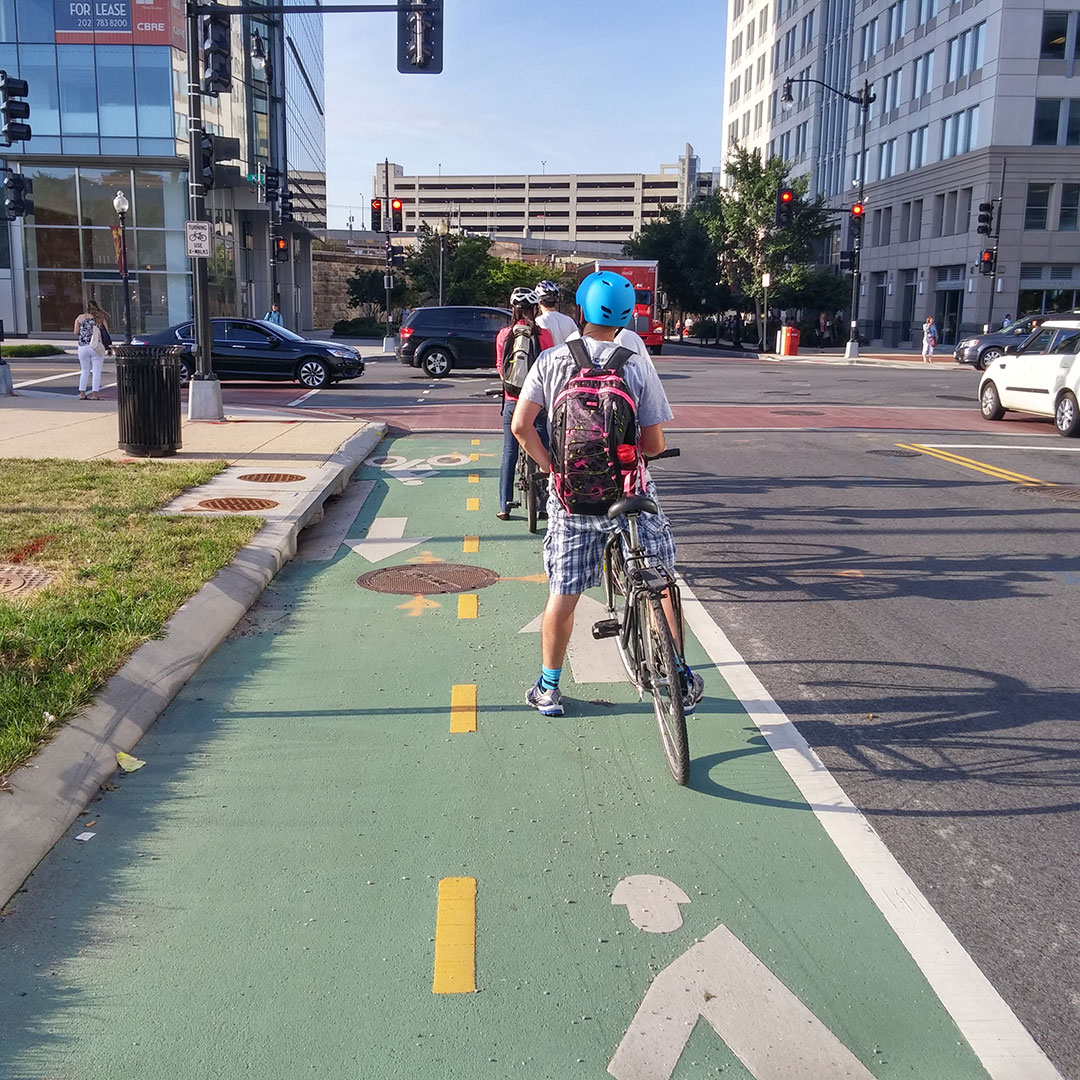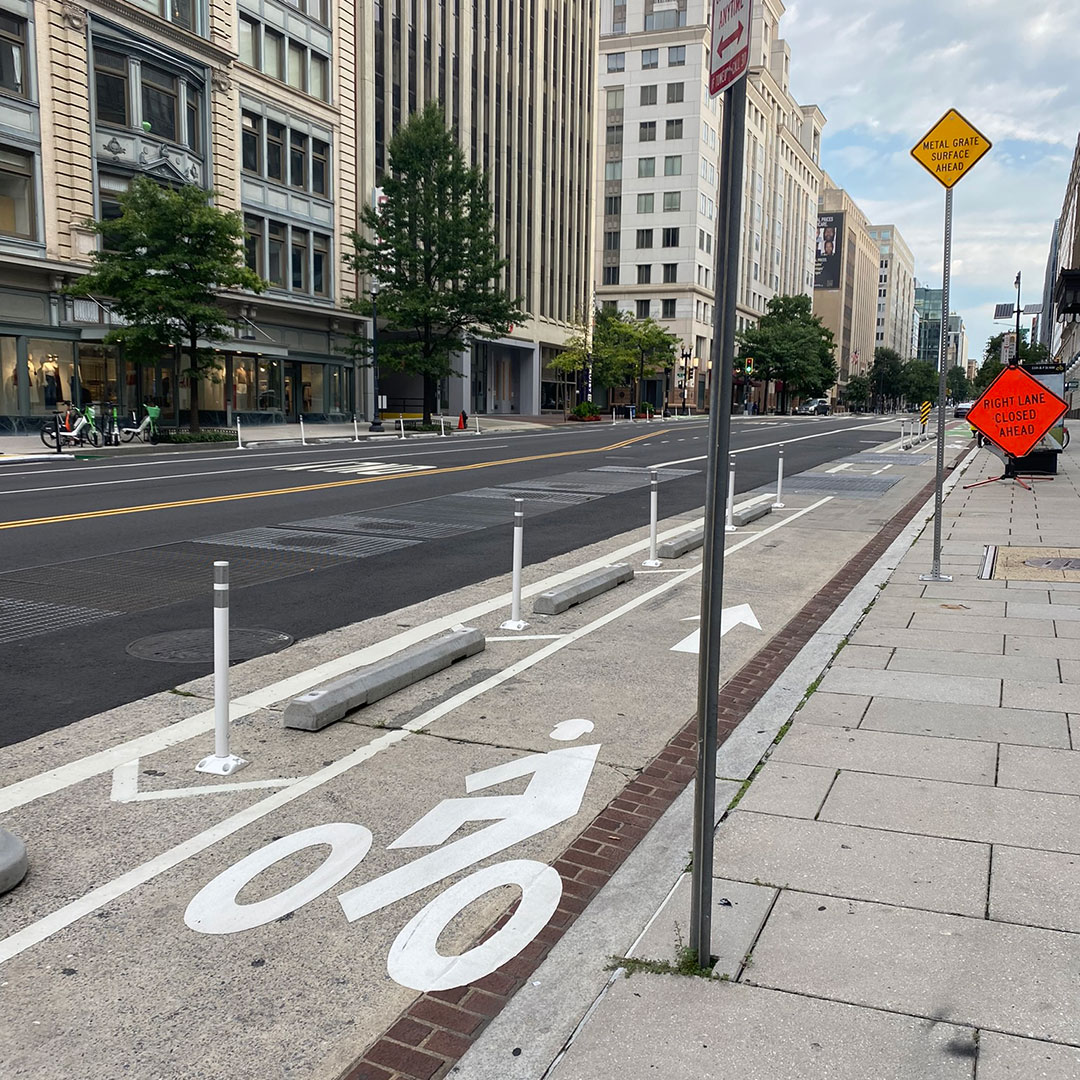February 17, 2025
Before the National Association of City Transportation Officials (NACTO) existed, U.S. cities didn’t have much guidance to draw from when it came to the planning and design of walking and bicycling facilities in urban environments. To equip cities to do more to improve safety and comfort for people on bikes, NACTO released the inaugural Urban Bikeway Design Guide in 2011, compiling insights and lessons gained from cities across the world with quality bike networks. The Urban Bikeway Design Guide became an established resource, helping city transportation officials draw inspiration and innovation from other cities to develop a vision for their own bike networks.
And the guide has had an undeniable impact, giving cities ideas and tools to get more and better bicycling facilities designed and constructed. “It gave cities permission to think outside the car framework that most roadway engineers were used to,” said Principal Engineer Radu Nan. “Through providing the perspective of the person on a bike, the guide helped cities add elements not found in typical city and DOT standards.”


Third Edition of the Urban Bikeway Design Guide
Fast forward to 2025, and NACTO has now released the third edition of the Urban Bikeway Design Guide. The new edition takes guidance to municipalities even further by providing more details they can use to get to a design decision, drawing from the evaluation of implemented facilities across the country. This is particularly valuable to smaller cities or cities with fewer resources.
Another differentiator of the new guide compared to its prior editions is the attention paid to how people on bikes interact with other street users, particularly those with vision impairments. The guide includes elements on how to separate spaces for people walking and biking and educates designers on what those interactions could look like.
Where the New Urban Bikeway Design Guide Can Take Us
Transportation is a fast-moving industry, but to plan effectively and ultimately shape the change we want to see, we must also retain a long view. There is important work that remains to be done in prioritizing the safety and experience of people who bike on city streets. It starts with resources like this, that cast a vision for a better bicycling future and provide guidance and practices that will support cities in shaping that future for themselves.
When we zoom out a few years, we see how the inaugural guide served as in inflection point in the design and construction of more separated bicycling facilities across the United States. We’re excited about the potential of the third edition to continue that momentum while presenting even higher standards to make bicycling in the U.S. and across North America more comfortable, safe, and attractive to bicycle riders of all abilities and experience levels, and appreciated the opportunity to play a role in its development. (Side note: to see how the guide fits in with other quality guidance on the planning, design, and construction of walking and bicycling facilities, check out our handy summary of active transportation guidance documents here.)
The guide is currently available in both e-book and hard copy. Learn more and order one here on NACTO’s website.
